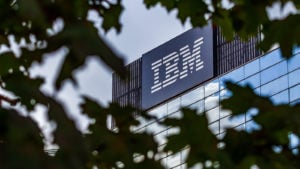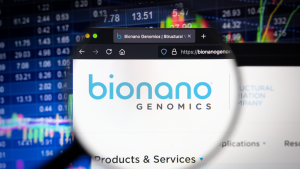3 Deeply Undervalued Growth Stocks
One of the New York Yankees’ most well-known players’, Yogi Berra, famous for his strange, yet funny statements, used to say, “This is deja vu all over again.” That’s how I feel about U.S. stocks at this point. In many ways, the current environment feels like 2022, when most economists and Street investors were sure that the Fed’s rate hikes would plunge the U.S. into a terrible recession.
Many investors— ignoring good economic data and strong quarterly results from most companies— fled from stocks as a result. And eventually, the constant “Don’t fight the Fed” warnings turned out to be unwarranted, as the U.S. economy continued growing rapidly, and stocks rallied. Now many economists and Street investors are sure that the roughly one percentage increase in Treasury yields since July will greatly undermine the U.S. economy and corporate profit. As a consequence, they are ignoring excellent quarterly results from a multitude of companies, including General Electric (NYSE:GE), ServiceNow (NYSE:NOW), and Microsoft (NASDAQ:MSFT).
Once again, I believe that the bears’ fears will prove to be unfounded because the excellent economy and technical innovations will trump a one percentage point increase in interest rates. Meanwhile, many growth stocks have been badly beaten down during the current correction.
Here are three undervalued growth stocks that long-term investors should consider buying.
International Business Machines (IBM)

IBM’s (NYSE:IBM) cash flow is growing rapidly, as its net cash from operating activities surged a huge $1.2 billion in the third quarter, versus the same period a year earlier to $3.1 billion. For the first three quarters of 2023, the firm’s net cash from operating activities soared $3 billion year-over-year to $9.5 billion.
CEO Arvind Krishna noted that the company was beginning to benefit significantly from the widespread adoption of artificial intelligence, as he noted that “Our book of business in the third quarter specifically related to generative AI was in the low hundreds of millions of dollars.”
However, the firm’s top and bottom lines are poised to get a much larger boost form the proliferation of the technology, as Krishna reported that “thousands of (IBM’s clients)” have started to use the company’s AI products and/or services.
IBM ended Q3 with “$11 billion of cash and marketable securities,” somewhat insulating it from being seen as vulnerable to worries about interest rates.
Analysts, on average, expect the company’s 2024 earnings per share to come in at $9.46, up from $8.98 this year, but the shares are changing hands at a very low forward price-earnings ratio of 13.65.
Bionano Genomics (BNGO)

In many ways, Bionano Genomics (NASDAQ:BNGO) is the “poster child” for growth stocks that have gotten irrationally decimated during the current correction. Way overdone fears about the ability of companies to obtain financing in the current environment, along with the “animal spirits” of short sellers, have been the main culprits behind its plunge.
Admittedly, the stock’s huge downturn has been frustrating and worrisome for me, both because I own the shares and because I recommended that others buy them.
But the company is growing very rapidly, as it announced that its top line jumped 26%-29% last quarter versus the same period a year earlier, while the number of flowcells that it sold soared 55% versus the same period a year earlier. Flow cells are used to operate its DNA analysis tools. Meanwhile, the company’s losses are narrowing quickly. It reports that the cost-cutting steps that it has taken will reduce its expenditures by a cumulative $33 million starting in 2024. Considering the company’s operating loss came in at $125 million last year, that’s a sizable reduction.
Moreover, according to data provided by Yahoo Finance, the company’s forward price-sales ratio is well under one, while its market capitalization is less than $50 million. Given the huge potential of the company’s products, I find it difficult to believe that, in a worst-case scenario, it could not sell itself for much more than the current value of BNGO stock.
GSK (GSK)

British drug maker GSK (NYSE:GSK) appears to have multiple, strong, positive catalysts, yet the valuation of GSK stock remains very low.
In a recent Phase III trial, the company’s vaccine for respiratory syncytial virus (RSV) successfully protected adults aged 50-59 with “certain underlying medical conditions” from contracting RSV. In the wake of the data, the demand for the drug maker’s shot among those in this age range could surge.
Meanwhile, GSK’s Jemperli, a cancer treatment about which I’ve long been quite bullish, outperformed the standard of care, Merck’s (NYSE:MRK) Keytruda, in a “head-to-head clinical trial” involving ” patients with newly diagnosed nonsquamous non-small cell lung cancer.” The data has made me much more bullish about Jemperli’s long-term potential, which I believe is quite huge.
The forward price-earnings ratio of GSK stock is a very low 9.5, while it has a rather high dividend yield of 3.9%.
On the date of publication, Larry Ramer held a long position in BNGO. The opinions expressed in this article are those of the writer, subject to the InvestorPlace.com Publishing Guidelines.

